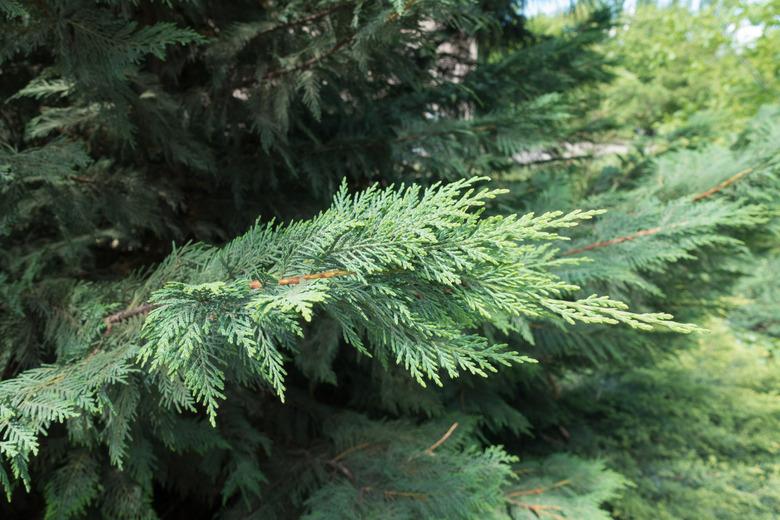Why Cedar Tree Needles Are Turning Yellow
If your cedar tree (Cedrus spp.) isn't looking like itself, you might wonder why the cedar tree needles are turning yellow. Changes in needle colors are often a sign that something's not right with the tree. The cause can be environmental damage, disease, insects or physical damage to the cedar. Identifying the cause of the yellow cedar needles helps you treat it and hopefully save your tree.
Regular Needle Shed
One reason cedar needles turn yellow is due to natural needle shed. As interior needles get older, they start to turn yellow and brown before falling off the tree. This process happens in the late summer and early fall months to make room for the new needles. If all of the yellow needles are interior needles and fall off in autumn, this is likely the reason and is no cause for concern.
Wrong Amount of Water
If your cedar trees don't get enough water, they can become drought stressed, which can change the foliage color to yellow or brown. This is most likely to happen during hot summer months. If the soil is dry an inch down, the tree could use some water. Grab your garden hose and give it a good drink until the soil is moist but not too saturated.
Overwatering your cedar tree can cause even more issues, including yellow needles. When you irrigate too much or the cedar tree soil has poor drainage, the tree can develop root rot, which is caused by a fungus. This prevents the roots from getting oxygen. If your tree is already infected, it's too late to save it. Removing the tree can prevent the fungus from infecting other nearby cedar trees.
Improper Soil pH
The ideal soil pH range for cedars is 6.0 to 6.5 with a tolerance up to 7.5. When soil is overly acidic side, the cedar foliage can turn yellow or brown because of nutrient deficiency. Adjusting the soil pH can help keep it in the ideal range and prevent yellowing.
Yellow Cedar Needles From Insects
Some insects cause damage to cedar trees, resulting in yellow needles. Leaf miners are one pest-based reason cedar needles turn yellow. These pests are active in early summer and insert their eggs into green needle tips on young twigs. Those twigs first turn yellow before changing to brown during the winter. Pruning and burning the infested twigs can prevent the problem from becoming worse.
Mites are another threat to cedar trees and might be another reason cedar needles are turning yellow. Mite infestations leave the needles looking yellow or brown with speckling on them. Mites can multiple rapidly in hot, dry weather. Applying a miticide spray can help control the population before it reaches damaging levels, although the height of most cedar trees makes spraying mature specimens literally out of reach. Read the product label to make sure it's safe for use on cedars.
Scale insects are small and white with a round or oval shape. They feed on the tree's sap, which leaves the needles yellow or gray. They can also kill younger cedar branches and affect the tree's overall growth. If your cedar is unhealthy overall, it's more susceptible to scale insects. Overfertilizing can make your tree especially susceptible.
To treat juniper scale, focus on improving growing conditions to make your tree stronger. Prune out the branches that have a heavy infestation. Insecticides can help the remaining branches.
